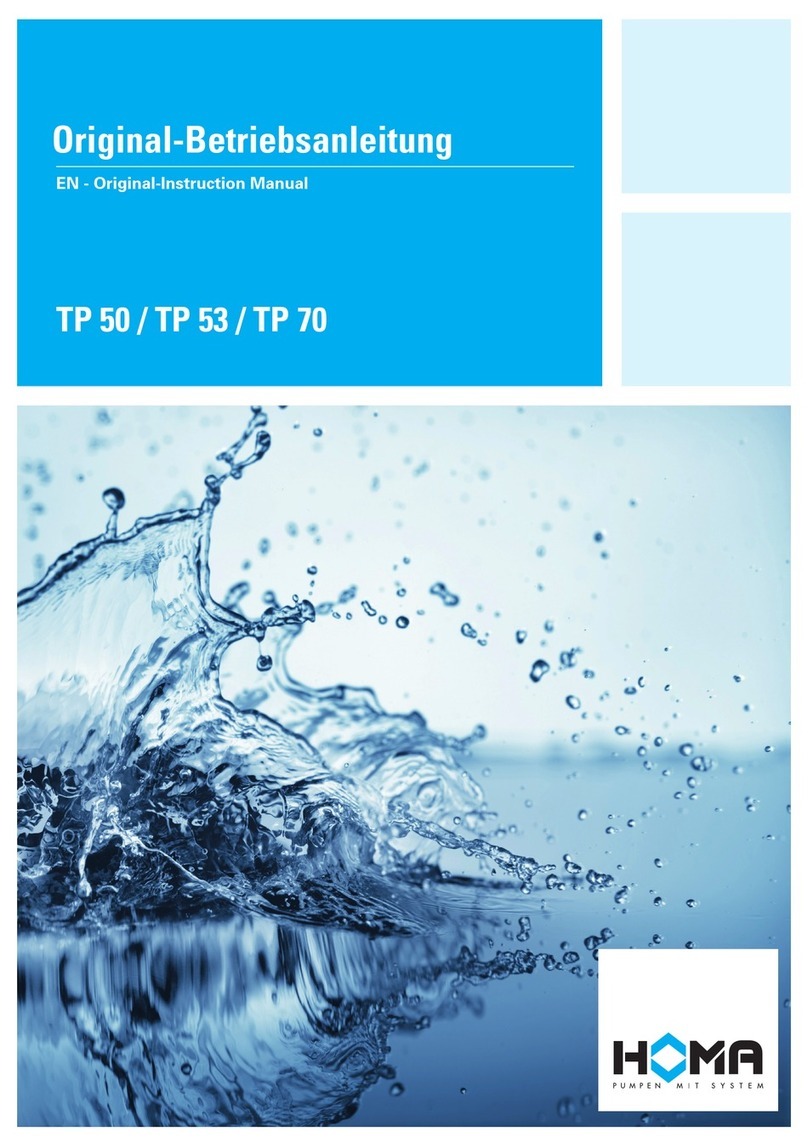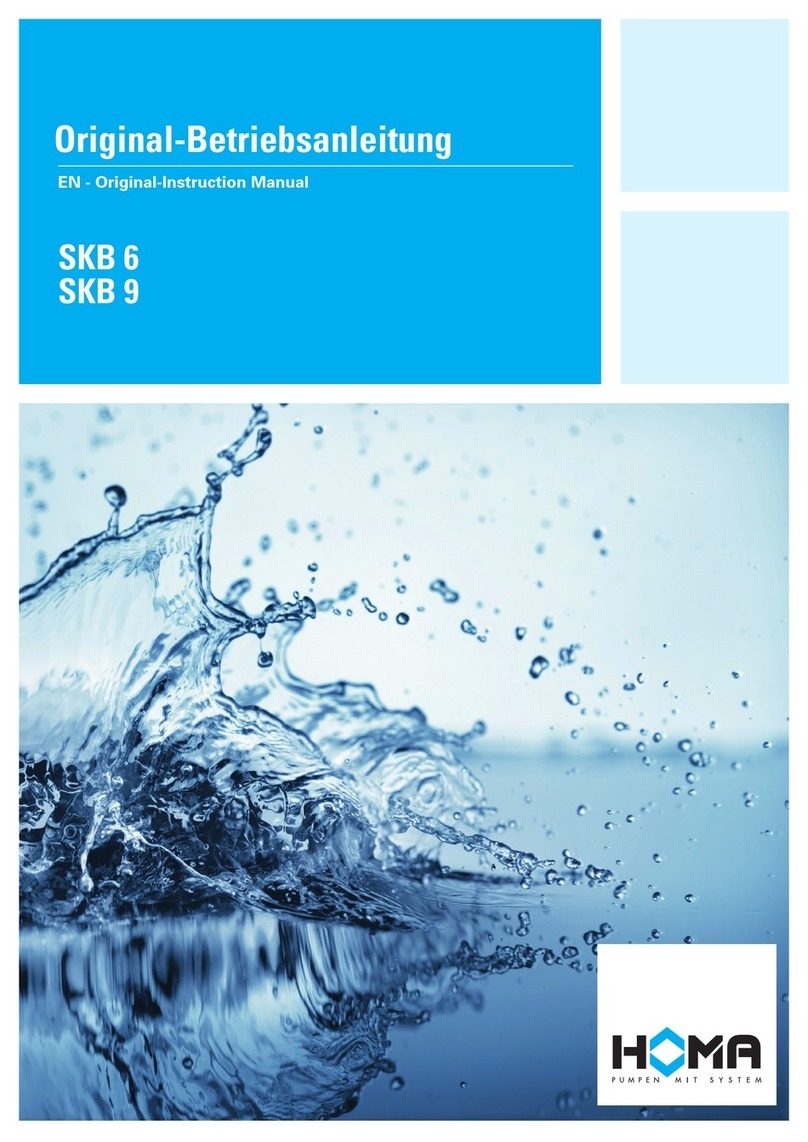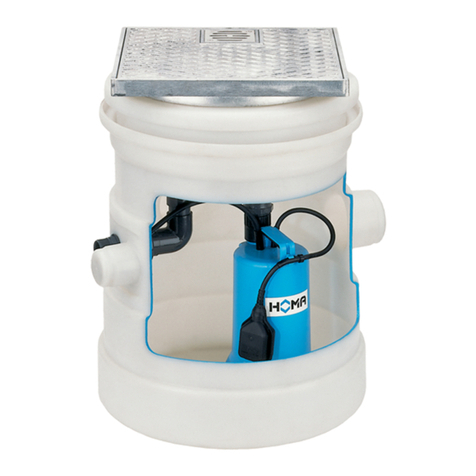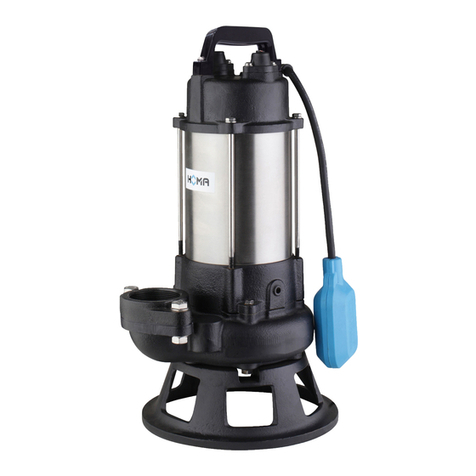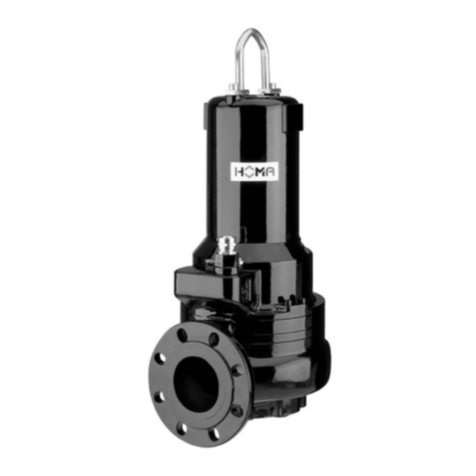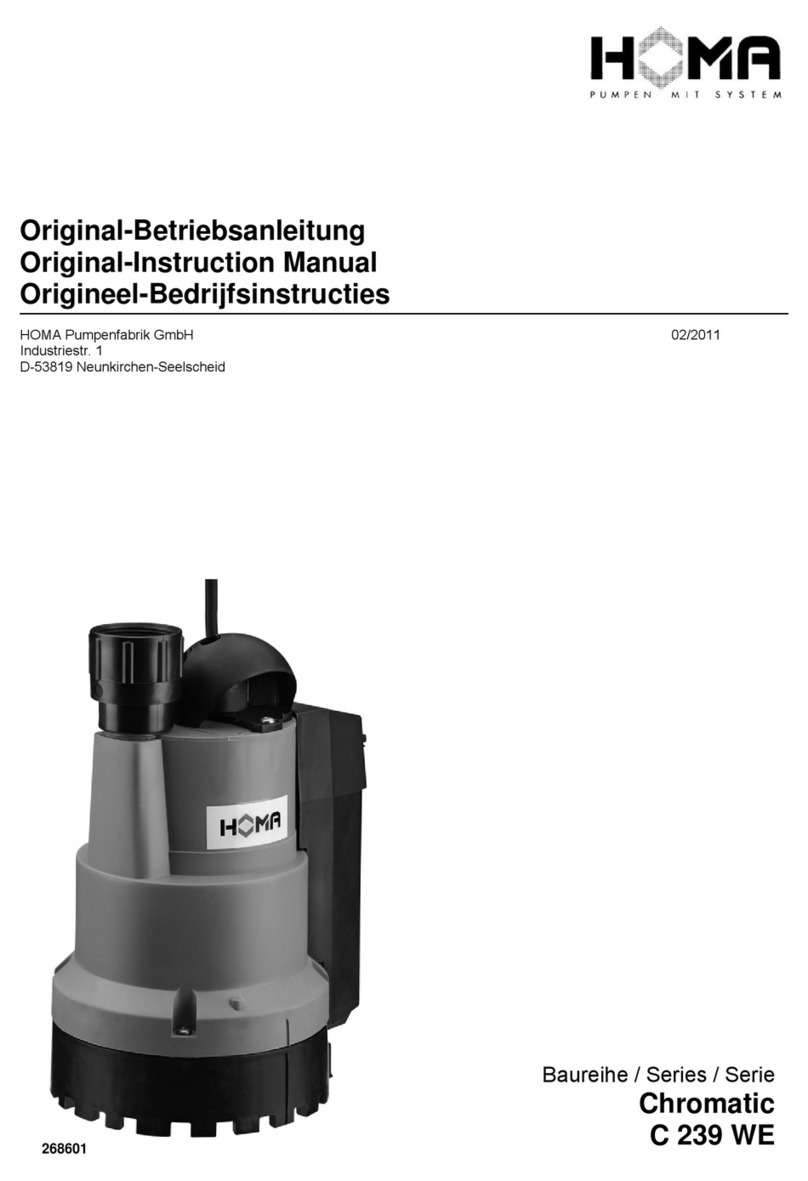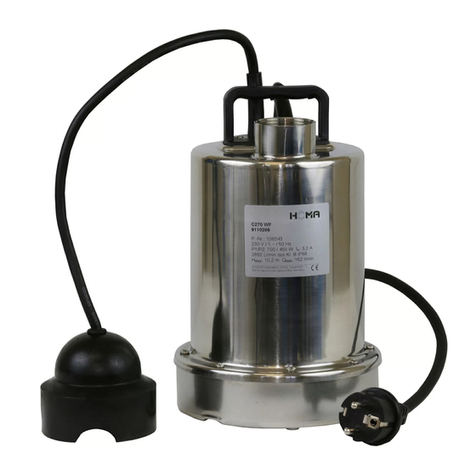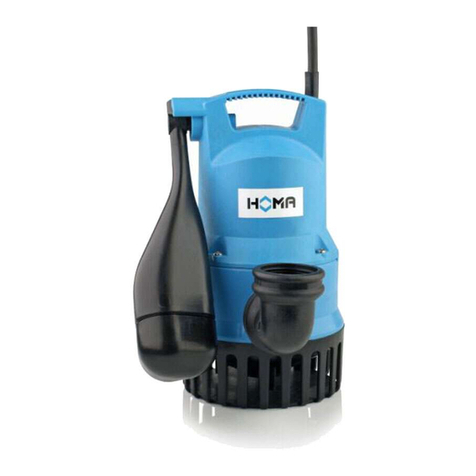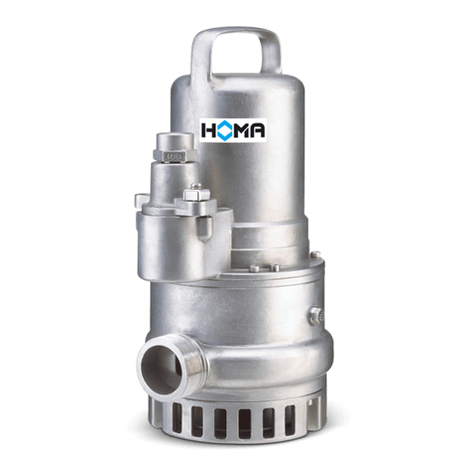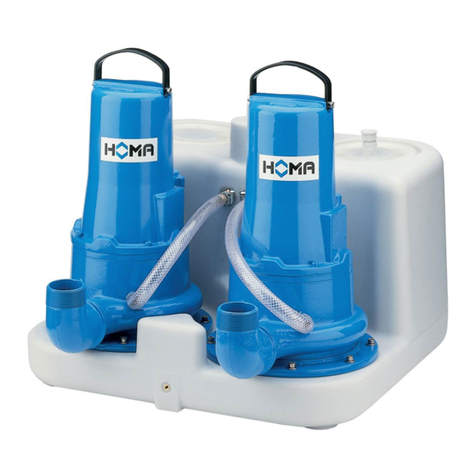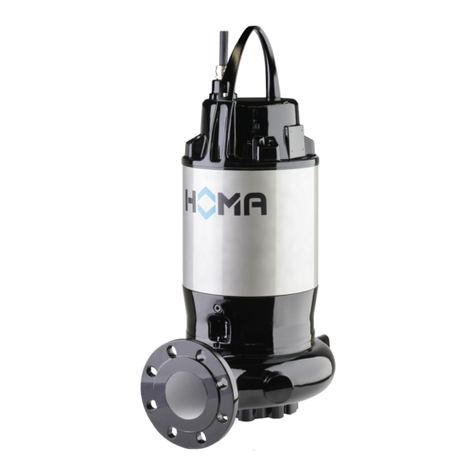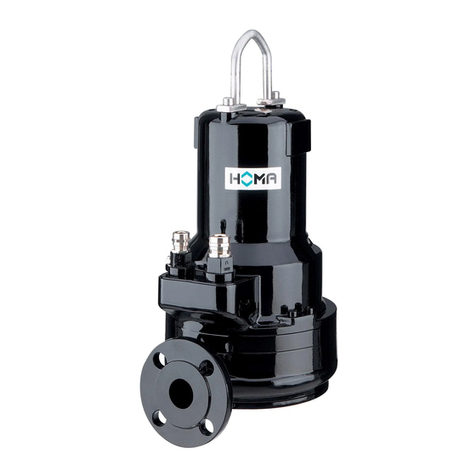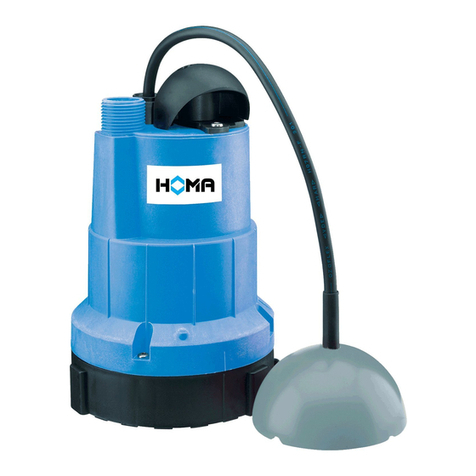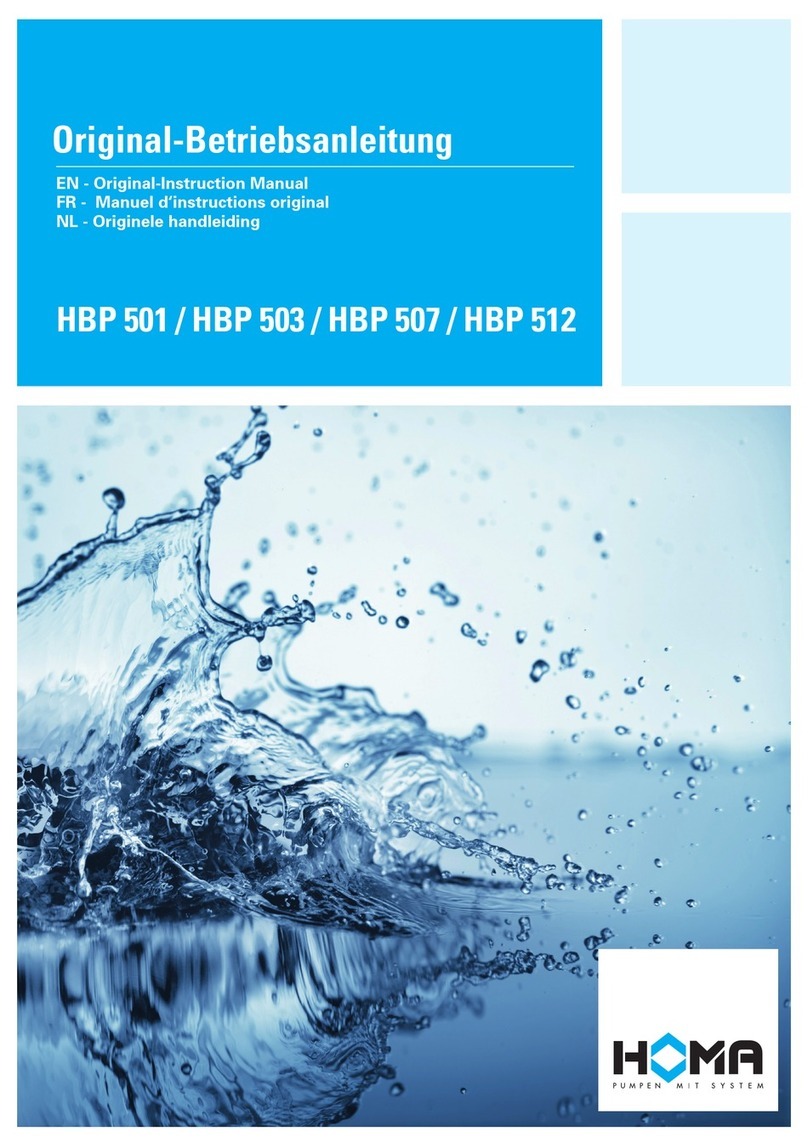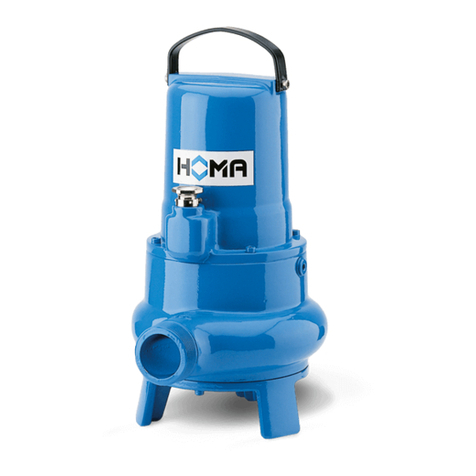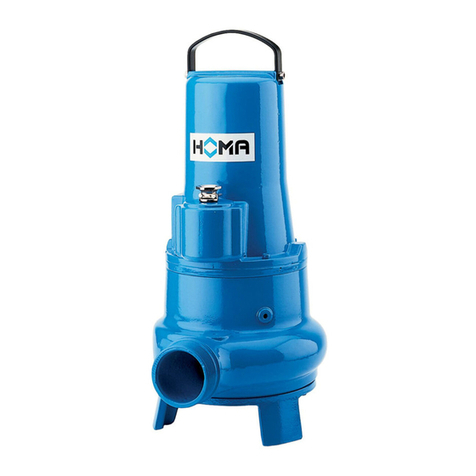
ENGLISH | 5
2. Safety
This chapter lists all the generally applicable safety instruc-
tions and technical information. Furthermore, every other
chapter contains specific safety instructions and techni-
cal information. All instructions and information must be
observed and followed during the various phases of the
product‘s lifecycle (installation, operation, maintenance,
transport etc.). The operator is responsible for ensuring
that personnel follow these instructions and guidelines.
2.1. Instructions and safety information
This manual uses instructions and safety information for
preventing injury and damage to property.
To make this clear for the personnel, the instructions and
safety information are distinguished as follows:
Each safety instruction begins with one of the following
signal words:
s Danger: Serious or fatal injuries can occur!
s Warning: Serious injuries can occur!
s Caution: Injuries can occur!
s Caution (Instruction without symbol): Serious dam-
age to property can occur, including irreparable dam-
age!
Safety instructions begin with a signal word and descrip-
tion of the hazard, followed by the hazard source and po-
tential consequences, and end with information on pre-
venting it.
2.2 Guidelines used and CE certification
Our products are subject to
s various EC directives,
s various harmonized standards,
s various national standards.
Please consult the EU Declaration of Conformity for the
precise information and the guidelines and norms in
effect.
Also, various national standards are also used as a basis
for using, assembling and dismantling the product. These
include the German accident prevention regulations, VDE
regulations, German Equipment Safety Law etc. The CE
symbol is found either on the type plate or next to the
type plate. The type plate is attached to the motor casing.
2.3. General safety
s Never work alone when installing or removing the
product.
s The machine must always be switched off before
any work is performed on it (assembly, dismantling,
maintenance, installation). The machine must be dis-
connected from the electrical system and secured
against being switched on again. All rotating parts
must be at a standstill.
s The operator should inform his/her superior immedi-
ately should any defects or irregularities occur.
s It is of vital importance that the system is shut
down immediately by the operator if any problems
arise which may endanger safety of personnel.
Problems of this kind include:
s Failure of the safety and/or control devices
s Damage to critical parts
s Damage to electric installations, cables and in-
sulation.
s Tools and other objects should be kept in a place re-
served for them so that they can be found quickly.
s Sufficient ventilation must be provided in enclosed
rooms.
s When welding or working with electronic devices,
ensure that there is no danger of explosion.
s Only use fastening devices which are legally defined
as such and officially approved.
s The fastening devices should be suitable for the con-
ditions of use (weather, hooking system, load, etc). If
these are separated from the machine after use, they
should be expressly marked as fastening devices.
Otherwise they should be carefully stored.
s Mobile working equipment for lifting loads should
be used in a manner that ensures the stability of the
working apparatus during operation.
s When using mobile working equipment for lifting non
guided loads, measures should be taken to avoid tip-
ping and sliding etc.
s Measures should be taken that no person is ever di-
rectly beneath a suspended load. Furthermore, it is
also prohibited to move suspended loads over work-
places where people are present.
s If mobile working equipment is used for lifting loads,
a second person should be present to coordinate the
procedure if needed (for example if the operator‘s
field of vision is blocked).
s The load to be lifted must be transported in such a
manner that nobody can be injured in the case of a
power cut. Additionally, when working outdoors,
such procedures must be interrupted immediately if
weather conditions worsen.
s These instructions must be strictly observed. Non-ob-
servance can result in injury or serious damage to
property.
2.4. Operating personal
All personnel who work on or with the product must be
qualified for such work; electrical work, for example may
only be carried out by a qualified electrician. The entire
personnel must be of age.
Operating and maintenance personnel must also work ac-
cording to local accident prevention regulations.
It must be ensured that personnel have read and under-
stood the instructions in this operating and
maintenance handbook; if necessary this manual must be
ordered from the manufacturer in the required language.
2.5. Electrical work
Our electrical products are operated with alternating or
industrial high-voltage current. The local regulations (e.g.
VDE 0100) must be adhered to. The “Electrical connec-
tion” data sheet must be observed when connecting the
product. The technical specifications must be strictly ad-
hered to. If the machine has been switched off by a pro-
tective device, it must not be switched on again until the
error has been corrected.
